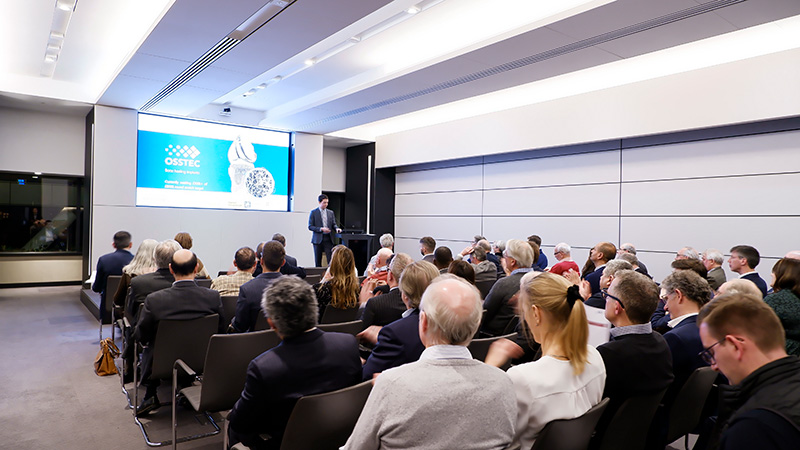If you’re an early-stage founder preparing to pitch to Oxford Innovation Finance or any other group of angel investors or EIS Funds, you’ll likely be thinking about how to stand out, and ultimately, how to secure investment. The reality is, you’re not just pitching your technology, you’re pitching a business opportunity.
Here are some top tips from our experts for making your pitch investor-ready:
Think like an investor, not a technologist
We see it all the time – a promising business gets overlooked because the pitch focused too much on the technology.Remember, investors aren’t here to buy your product, they’re here to back a high-growth, high-return business.
In a five-minute pitch, we recommend spending no more than two minutes on the technology, even if it’s groundbreaking. The remaining time should cover your:
- Business model
- Commercial traction
- Go-to-market strategy
- Revenue plan
- Funding requirement
- Exit pathway
Technology is important, but it’s the business proposition that drives investment decisions.
Tailor your pitch to the audience
Before you send your deck to a fund or investor group, ask yourself:
- What sectors and stages do they invest in?
- Are they focused on deep tech, clean tech, or scalable SaaS?
- How many pitches might they see this month?
- What would make your pitch rise to the top of the pile?
Most funds, including Oxford Innovation Finance, receive far more decks than they could ever read in full, which means your first impression needs to be both sharp and memorable. Condense what you do into three clear, exciting lines because if you can’t explain it in 30 seconds, you’ve already lost your audience.
Tell us why you’re different
In a sea of early-stage businesses, why should we pick yours?
- Is your solution truly novel?
- Are you solving a pain point in a way no one else is?
- Do you have a competitive edge – proprietary data, industry expertise, strategic partnerships?
You don’t need to be the only player in the space, but you do need to be the most investable.
Exit isn’t optional, it’s essential
Investors are looking for a return, and that return comes via an exit. While it’s true that early-stage forecasts are often ‘best guesses’, any credible pitch should address:
- Potential exit routes (e.g. trade sale, IPO)
- Comparable company exits and multiples
- Timelines and value expectations
Even a rough outline shows that you’re developing with an investor mindset and a long-term outcome in view. It’s one of the most common oversights in early-stage decks, and one of the most important to get right.
Focus on the fundability, not just the vision
Founders are often visionary, and that’s a great thing, but investors want to know:
- Is this team capable of executing?
- Is the market large and growing?
- Is there evidence of demand?
- Will my investment help the company scale and ultimately, increase in value?
Think beyond the pitch. Think beyond the product. Think about the fundability of your entire business.
Final Thought: Investment Is a Partnership
At Oxford Innovation Finance, we don’t just invest in ideas, we invest in people we believe can deliver growth and success. A strong pitch is just the beginning of a much longer relationship, built on clarity, ambition and execution.
So, before you click ‘send’ on that next pitch deck, take a step back. Ask yourself not just whether it’s a good presentation, but whether it presents a compelling investment case.
For more information about how to raise investment for your business through Oxford Innovation Finance, visit our Raise with us page. If you’re ready to register, complete our Company Registration form.
